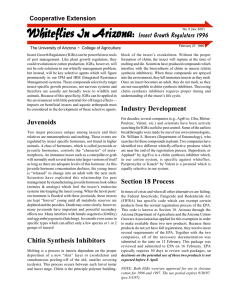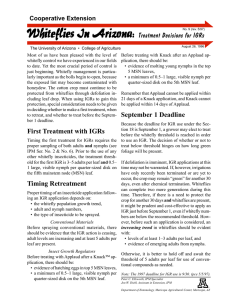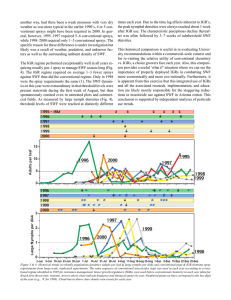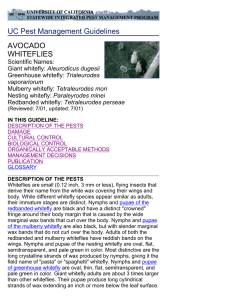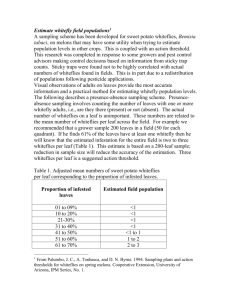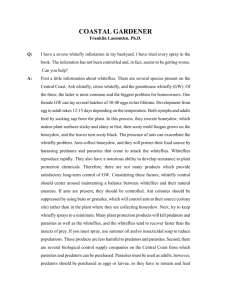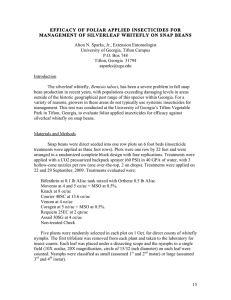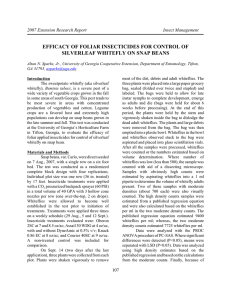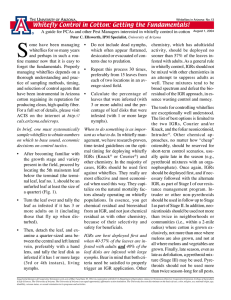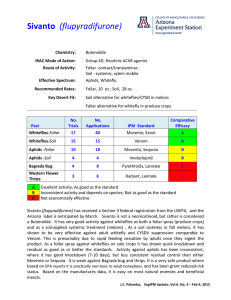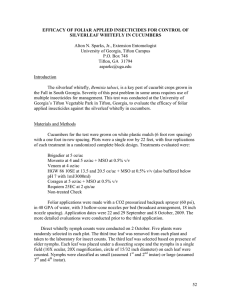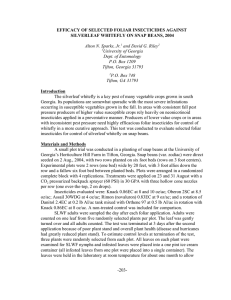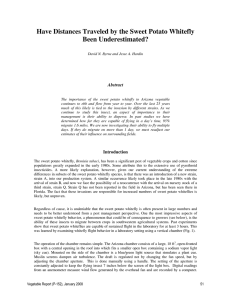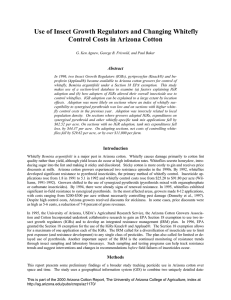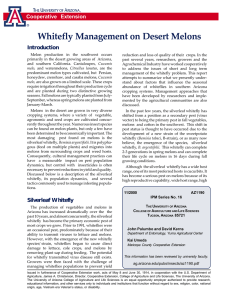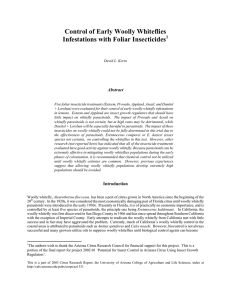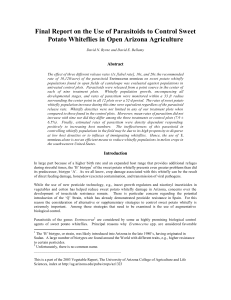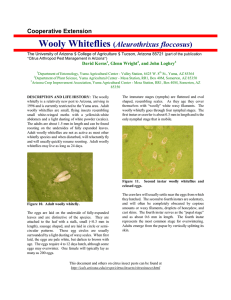Whiteflies: TheyÕre Back...
advertisement
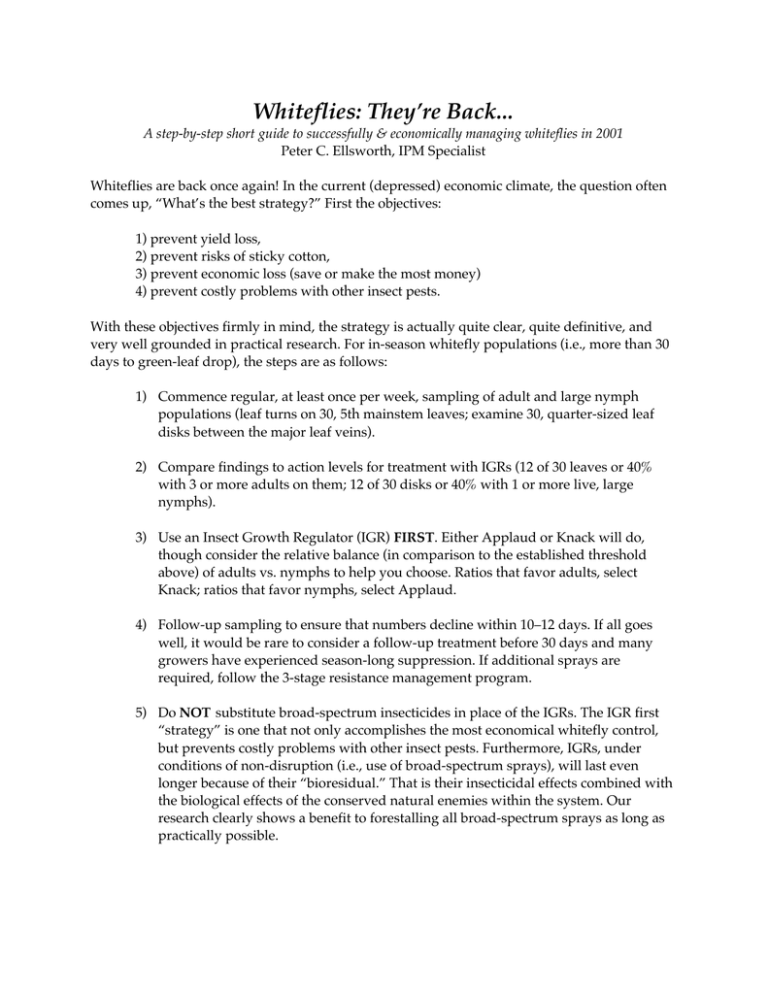
Whiteflies: TheyÕre Back... A step-by-step short guide to successfully & economically managing whiteflies in 2001 Peter C. Ellsworth, IPM Specialist Whiteflies are back once again! In the current (depressed) economic climate, the question often comes up, ÒWhatÕs the best strategy?Ó First the objectives: 1) prevent yield loss, 2) prevent risks of sticky cotton, 3) prevent economic loss (save or make the most money) 4) prevent costly problems with other insect pests. With these objectives firmly in mind, the strategy is actually quite clear, quite definitive, and very well grounded in practical research. For in-season whitefly populations (i.e., more than 30 days to green-leaf drop), the steps are as follows: 1) Commence regular, at least once per week, sampling of adult and large nymph populations (leaf turns on 30, 5th mainstem leaves; examine 30, quarter-sized leaf disks between the major leaf veins). 2) Compare findings to action levels for treatment with IGRs (12 of 30 leaves or 40% with 3 or more adults on them; 12 of 30 disks or 40% with 1 or more live, large nymphs). 3) Use an Insect Growth Regulator (IGR) FIRST. Either Applaud or Knack will do, though consider the relative balance (in comparison to the established threshold above) of adults vs. nymphs to help you choose. Ratios that favor adults, select Knack; ratios that favor nymphs, select Applaud. 4) Follow-up sampling to ensure that numbers decline within 10Ð12 days. If all goes well, it would be rare to consider a follow-up treatment before 30 days and many growers have experienced season-long suppression. If additional sprays are required, follow the 3-stage resistance management program. 5) Do NOT substitute broad-spectrum insecticides in place of the IGRs. The IGR first ÒstrategyÓ is one that not only accomplishes the most economical whitefly control, but prevents costly problems with other insect pests. Furthermore, IGRs, under conditions of non-disruption (i.e., use of broad-spectrum sprays), will last even longer because of their Òbioresidual.Ó That is their insecticidal effects combined with the biological effects of the conserved natural enemies within the system. Our research clearly shows a benefit to forestalling all broad-spectrum sprays as long as practically possible.
